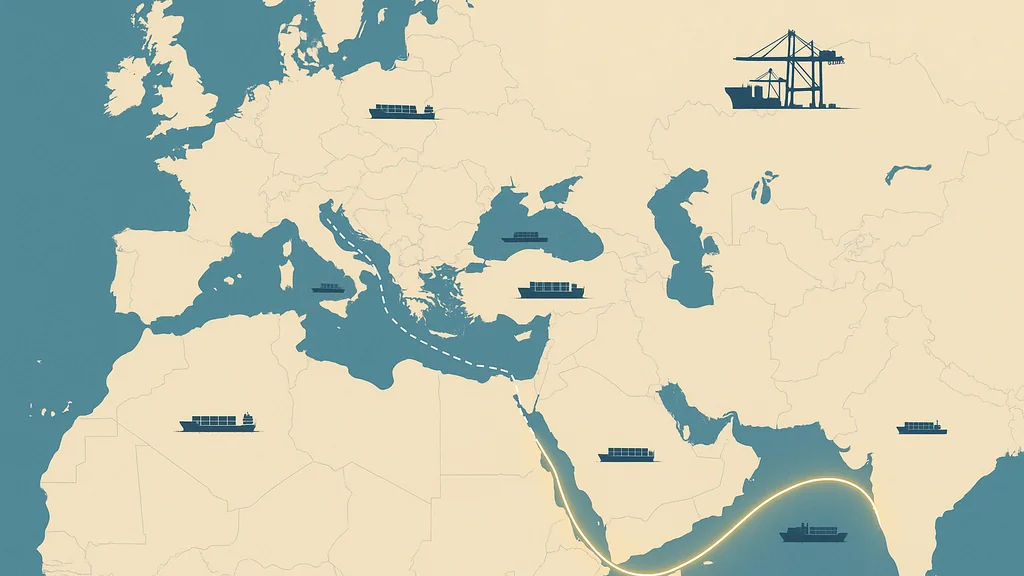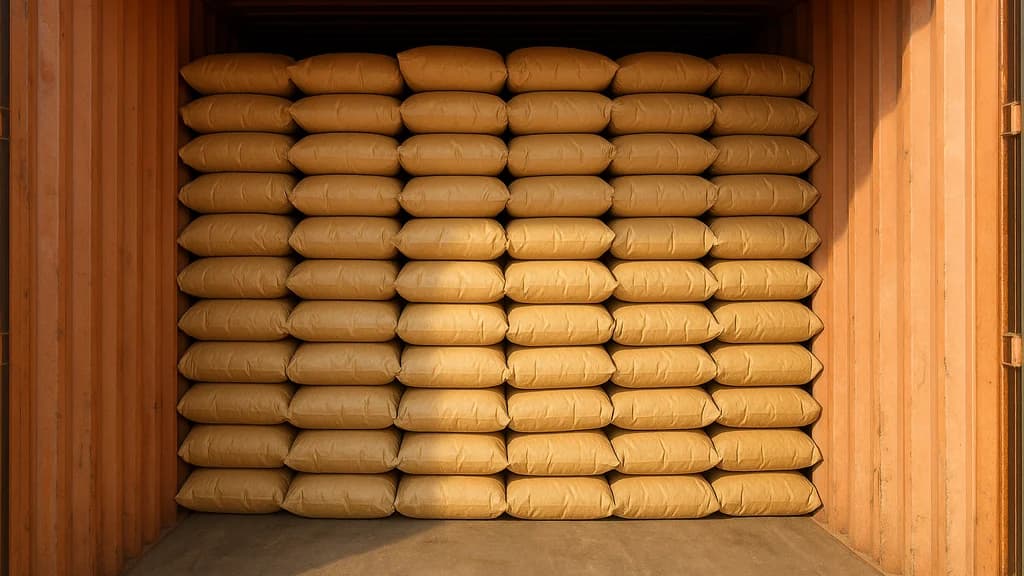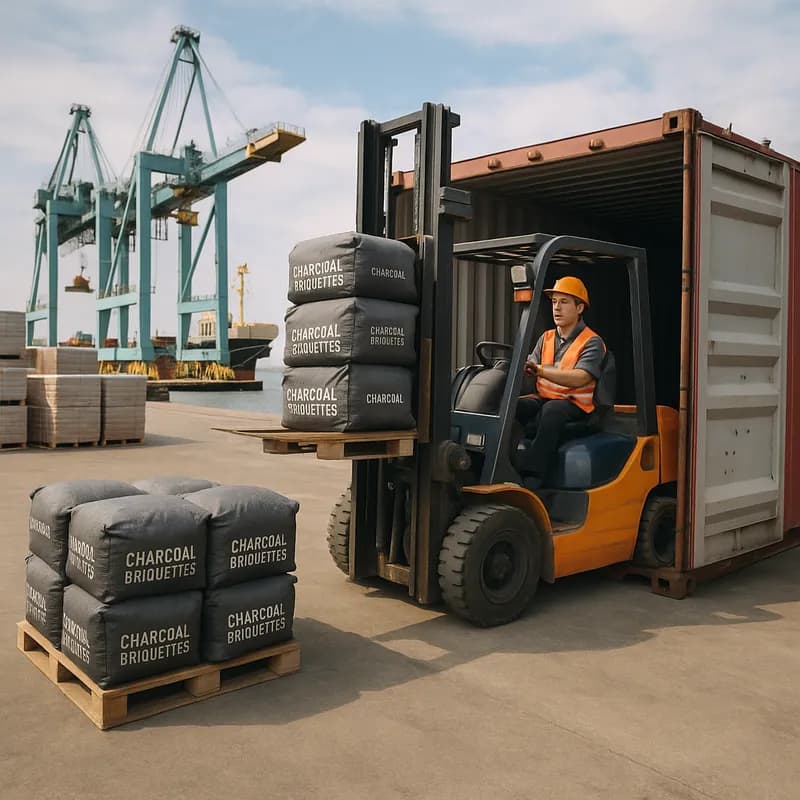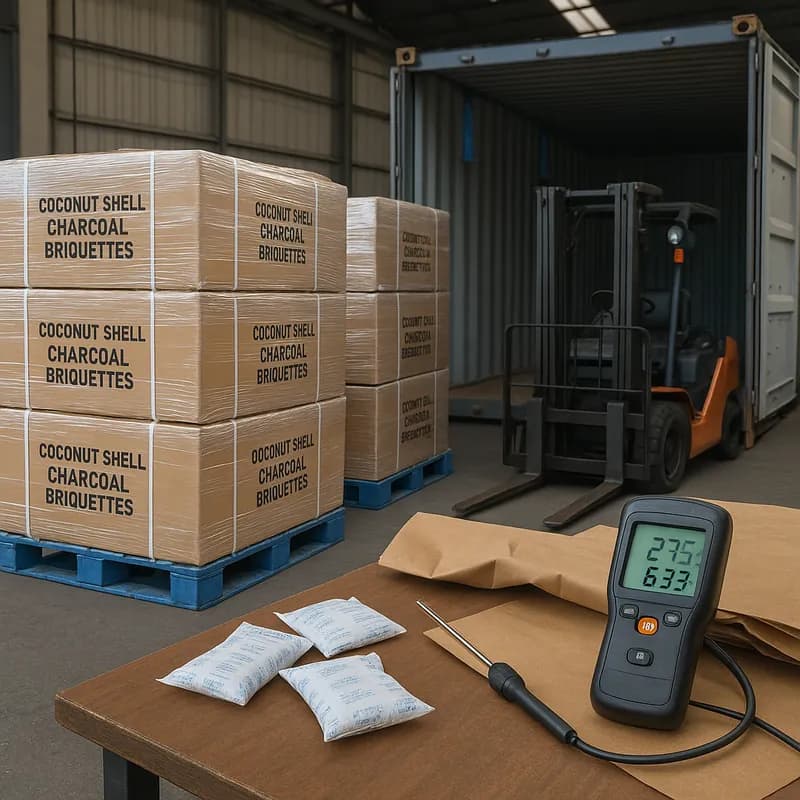See the best ports for charcoal import and when each actually saves money. We map DG vs non-DG, HS 4402 docs, and inland moves so you pick the right hub.
Top Global Ports for Charcoal Import and Their Strategic Advantages
The Short Answer
If you want the smoothest charcoal imports today, steer toward big, well-connected hubs that routinely handle HS 4402 cargo. In Europe, Rotterdam and Antwerp-Bruges are the workhorses, with Hamburg close behind if your customers are in DACH or Scandinavia. For the U.S., Savannah and Houston usually give the best total landed cost from West Africa; New York/New Jersey wins when your delivery points are in the Northeast (but expect higher port fees). In the Middle East, Jebel Ali’s free zone makes re-exports across the GCC faster and cheaper.
Charcoal is often classed as hazardous (UN 1361, Class 4.2, self-heating). If your product is tested and certified “not restricted” under the IMDG Code (common for high-quality briquettes), more ports and storage options open up—and costs drop. Duties on HS 4402 are typically 0% in the U.S./EU/UK, but compliance and documentation matter more than the tariff line.
Immediate takeaway: pick a proven hub, decide DG vs. non-DG early, and plan your inland move before the vessel sails.
What You Need to Consider
Is charcoal hazardous cargo and does that change your port choice?
- Most wood charcoal falls under UN 1361 (Class 4.2, self-heating). That triggers hazmat handling rules, terminal restrictions, and higher yard/storage costs. Some terminals simply won’t accept 4.2.
- Many briquettes—especially coconut shell briquettes with low volatile matter—can ship as non-dangerous if they pass the UN N4 self-heating test. You’ll need a recent lab report (SGS/BV/TÜV) and an SDS.
- In our experience, getting your charcoal certified as non-DG is the easiest way to unlock cheaper, faster handling at most ports.
Practical takeaway: confirm DG status before booking. If you’re shipping briquettes, invest in testing—it usually pays for itself in reduced port fees and simpler storage.
Which HS code and documents do you need?
- HS/HTS code: 4402 (Wood charcoal, including shell or nut, whether or not agglomerated). EU TARIC, US HTS, and UK Global Tariff often show 0% duty for 4402.
- Standard docs: commercial invoice, packing list, bill of lading, certificate of origin (preferential if applicable), SDS, and hazard classification or “not restricted” letter with test summary.
- Compliance extras:
- US: many importers file a Lacey Act declaration for HS 4402; check with your broker.
- EU/UK: watch the EU Deforestation Regulation (EUDR) rollout. HS 4402 is in scope for wood charcoal; non-wood charcoals (e.g., coconut shell) may differ—confirm with counsel and customs.
Practical takeaway: align HS code and compliance early with your broker. Don’t guess on Lacey Act/EUDR—confirm applicability with your product type.
Port capability, storage, and D&D (demurrage/detention)
- Not all terminals handle Class 4.2. The North Europe trio (Rotterdam, Antwerp-Bruges, Hamburg) and major U.S. gateways (NY/NJ, Savannah, Houston) do, but acceptance can vary by terminal.
- Port D&D has normalized since the pandemic spike, but hazmat boxes often accrue higher yard charges and shorter free time.
- Charcoal doesn’t typically require fumigation, but some ports/warehouses want temperature monitoring or proof the product is fully carbonized (we’ve seen requests in Hamburg and London Gateway).
Practical takeaway: ask your forwarder which terminals accept 4.2, what the free time is, and whether storage is inside or outside the DG yard.
Route and reliability right now
- Red Sea disruptions have extended Asia–EU transit by 10–15 days on some strings. This makes North Europe hubs with resilient rail/barge options (Rotterdam/Antwerp) more valuable.
- West Africa–US services favor East/Gulf Coast calls. Savannah and Houston see competitive transit times and inland rates versus NY/NJ.

Practical takeaway: bake in a 1–2 week buffer on Asia–EU lanes; choose inland-friendly hubs to claw back time.
The Reality Check
Which ports really handle the most charcoal?
- Europe: Rotterdam and Antwerp-Bruges are the top gateways for HS 4402 into the EU, both for direct imports and transshipment from the Med (Algeciras/Tanger Med). Hamburg is strong for Northern/Eastern Europe.
- U.S.: NY/NJ sees the most volume overall, but Savannah’s share has grown with Southeast demand. Houston dominates the Gulf for West Africa connections.
- Middle East: Jebel Ali (DXB) is the king of re-exports—especially for shisha charcoal destined for KSA, Kuwait, and Oman.
What this means: if you want dependable berthing, more weekly sailings, and better hazmat handling, choose the biggest hubs with proven DG infrastructure.
Rotterdam vs. Antwerp vs. Hamburg—how do they compare?
- Rotterdam: unmatched scale, automation, on-dock rail, deep hazmat experience, and competitive barge into Benelux/France. Slightly higher terminal charges at times, but offset by speed.
- Antwerp-Bruges: excellent chemical/DG competence, dense warehouse ecosystem, often sharper storage rates than Rotterdam; great for BeNeLux and northern France.
- Hamburg: best for Germany, Poland, Czechia, and Baltics; solid hinterland rail. You might see marginally longer ocean transit from some services and occasional river draft-related constraints.
Our take: Rotterdam for pure speed and flexibility; Antwerp for DG-friendly storage and sharp pricing; Hamburg when your distribution is DACH/CEE. We’ve used all three—small differences in inland cost and free time can swing the decision.
Best U.S. port for West Africa charcoal—what’s truly cost-effective?
- Savannah: reliable transit, efficient terminals, strong drayage market, and competitive rail to the Southeast/Mid-Atlantic. Often $150–$300 per container cheaper door-to-door than NY/NJ if your DC is in the Southeast.
- Houston: ideal if your customers are in Texas/Louisiana or you need Gulf distribution. Good West Africa connectivity. Warehousing costs can be lower than East Coast.
- NY/NJ: most sailings and fastest to Northeast consignees, but higher port fees and congestion risk. Worth it if your deliveries are within a one-day dray radius.
Reality: “Cheapest freight” doesn’t equal “lowest landed cost.” In our files, 3 out of 5 importers saved more on inland and D&D by choosing Savannah or Houston over NY/NJ.
Do ports require special storage or fumigation?
- Fumigation: usually not required for charcoal. If someone asks, they’re typically trying to manage self-heating risk—show your test report and SDS.
- Storage: DG yards can be pricier and have shorter free time. Non-DG certified briquettes get normal yard treatment and simpler warehouse options.
Pro tip: cool the product before stuffing, use moisture-barrier packaging, and add temperature loggers. We’ve avoided hot-box incidents this way—even in summer.
Can a free zone cut cost for re-exports?
- Yes. Jebel Ali Free Zone (JAFZA) suspends duties/VAT on inbound and allows relabeling, kitting, and regional pick-and-pack. If you’re feeding KSA, Kuwait, and Bahrain, the tax and speed benefits add up.
- Tanger Med (Morocco) is another smart node if you’re serving West Africa and southern EU with fast feeders.
Immediate takeaway: free zones help when you split inventory to multiple countries or need fast last-mile customization.
Your Best Move
Here’s how we’d decide, based on real-world shipments we run:
- Selling into EU Benelux/France/UK: choose Rotterdam or Antwerp-Bruges. If your charcoal is DG (UN 1361), Antwerp often delivers better yard/storage options; if it’s certified non-DG, Rotterdam’s velocity is hard to beat.
- Targeting Germany/Poland/Czechia: route through Hamburg for best inland rates and transit times to DACH/CEE.
- U.S. customers in Southeast/Gulf: pick Savannah or Houston. From West Africa, they usually win on total landed cost and D&D outcomes.
- Heavy Northeast U.S. demand: NY/NJ is fine—just lock in extended free time and warehouse appointments in advance.
- Middle East distribution or re-export: Jebel Ali, especially if you’re consolidating multiple SKUs (think horeca packs of Shisha Charcoal) and want duty/VAT efficiencies.
What to do next:
- Confirm your HS 4402 subheading and whether your product is DG or can be certified “not restricted” (run the UN N4 test if you haven’t).
- Ask your forwarder which terminals at your candidate ports accept Class 4.2 and what free time applies.
- Pre-book a warehouse slot and drayage before the vessel departs; insist on written D&D terms.
- Align compliance: Lacey Act (US), EORI/EUDR (EU), and UK customs—don’t leave this to arrival.
- Optimize packaging for safety and cost: cool the cargo, control moisture, and use temp loggers. For BBQ programs, high-density briquettes like our BBQ Coconut Shell Charcoal Briquettes help pass non-DG testing and reduce claims due to low ash and consistent burn.
If you have questions about Top Global Ports for Charcoal Import and Their Strategic Advantages or need expert guidance, contact our team.
A last word from the factory floor: we’ve found that choosing the “right” port is really choosing the right inland plan and DG status first. Do those two things, and Rotterdam vs. Antwerp—or Savannah vs. NY/NJ—becomes a straightforward math problem rather than a gamble.



